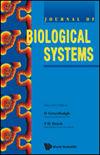AN ECOEPIDEMIC SEASONALLY FORCED MODEL FOR THE COMBINED EFFECTS OF FEAR, ADDITIONAL FOODS AND SELECTIVE PREDATION
IF 1.5
4区 数学
Q3 BIOLOGY
引用次数: 4
Abstract
In this paper, we study a predator–prey system in which the prey population is infected from a parasite and the growth of susceptible prey is suppressed due to fear of predation. We consider that the predators have the ability to distinguish between the susceptible and infected prey items, and they avoid the infected ones to reduce fitness cost. The predators are assumed to die naturally and also due to intraspecific competition. The proposed model is analyzed mathematically for the feasibility and stability of the system’s equilibria. We also discuss the existence of Hopf bifurcation by taking the feeding preference of predators as a bifurcation parameter. We perform global sensitivity analysis to identify model parameters having significant impact on the density of predator population in the ecosystem. Our simulation results show the stabilizing role of selective feeding of predators whereas fear factor and disease prevalence induce limit cycle oscillations. Feeding more the predators with additional foods bring stability in the system by evacuating the persistent oscillations. To model the situation more realistically, we consider that the parameters representing the cost of fear and the feeding preference of predators vary with time. For the seasonally forced system, conditions are obtained for which the system has at least one positive periodic solution; global attractivity of the positive periodic solution is also discussed. Our seasonally forced model demonstrates the appearance of a unique periodic solution, higher periodic solutions and complex bursting patterns.恐惧、额外食物和选择性捕食的综合效应的生态流行病季节性强迫模型
在本文中,我们研究了一个捕食者-猎物系统,在这个系统中,猎物群体被寄生虫感染,易感猎物由于害怕被捕食而生长受到抑制。我们认为捕食者有能力区分易感和感染的猎物,它们会避开感染的猎物以降低适应度成本。捕食者被认为是自然死亡,也可能是由于种内竞争。对所提出的模型进行了数学分析,证明了系统均衡的可行性和稳定性。并以捕食者的摄食偏好作为分岔参数,讨论了Hopf分岔的存在性。我们进行了全局敏感性分析,以确定对生态系统中捕食者种群密度有显著影响的模型参数。模拟结果表明,捕食者的选择性摄食具有稳定作用,而恐惧因素和疾病流行引起极限环振荡。用额外的食物喂养更多的捕食者,通过消除持续的振荡,使系统保持稳定。为了更真实地模拟这种情况,我们考虑了代表恐惧成本和捕食者的进食偏好的参数随时间而变化。对于季节强迫系统,得到了系统至少有一个周期正解的条件;讨论了正周期解的全局吸引性。我们的季节强迫模型展示了一个独特的周期解,更高的周期解和复杂的爆发模式的出现。
本文章由计算机程序翻译,如有差异,请以英文原文为准。
求助全文
约1分钟内获得全文
求助全文
来源期刊
CiteScore
2.80
自引率
12.50%
发文量
31
审稿时长
1 months
期刊介绍:
The Journal of Biological Systems is published quarterly. The goal of the Journal is to promote interdisciplinary approaches in Biology and in Medicine, and the study of biological situations with a variety of tools, including mathematical and general systems methods. The Journal solicits original research papers and survey articles in areas that include (but are not limited to):
Complex systems studies; isomorphies; nonlinear dynamics; entropy; mathematical tools and systems theories with applications in Biology and Medicine.
Interdisciplinary approaches in Biology and Medicine; transfer of methods from one discipline to another; integration of biological levels, from atomic to molecular, macromolecular, cellular, and organic levels; animal biology; plant biology.
Environmental studies; relationships between individuals, populations, communities and ecosystems; bioeconomics, management of renewable resources; hierarchy theory; integration of spatial and time scales.
Evolutionary biology; co-evolutions; genetics and evolution; branching processes and phyllotaxis.
Medical systems; physiology; cardiac modeling; computer models in Medicine; cancer research; epidemiology.
Numerical simulations and computations; numerical study and analysis of biological data.
Epistemology; history of science.
The journal will also publish book reviews.

 求助内容:
求助内容: 应助结果提醒方式:
应助结果提醒方式:


